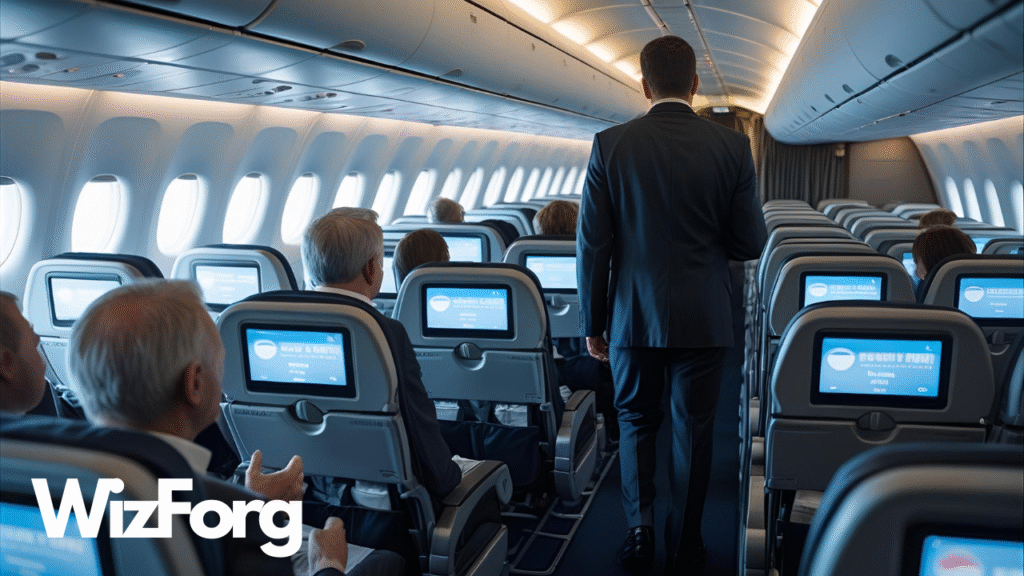In an era where you can stream movies from 35,000 feet or video call from the middle of the ocean, it might seem strange that some airlines still don’t offer in-flight Wi-Fi—or worse, outright ban it. However, the reasons extend far beyond technical limitations. In some cases, it’s about safety, legality, and control.
Not Just About Cost or Laziness
You might assume airlines that skip in-flight Wi-Fi are just trying to save money or haven’t caught up with the times. But installing onboard internet systems can cost millions per aircraft, plus recurring satellite fees. For budget airlines that prioritize low fares and fast turnaround, it’s not always worth the investment, especially if passengers don’t demand it.
However, for other airlines, particularly in regions like Asia or the Middle East, the absence of Wi-Fi often stems from something else entirely: regulation.
National Airspace, National Rules
The air above a country is still its sovereign territory. That means when you fly over different countries, you’re subject to different laws, including those governing internet access.
Some countries ban or tightly regulate in-flight connectivity due to concerns about both censorship and security. For example, flying over countries like China, India, or certain parts of the Middle East might require the airline to turn off onboard internet, even if the plane offers it elsewhere.
That’s why you may find your Wi-Fi connection suddenly vanishes mid-flight: it’s not a glitch—it’s the law.
Safety First?
In-flight Wi-Fi doesn’t use traditional mobile networks, so it doesn’t interfere with aircraft systems the way phone signals once might have. However, some aviation authorities and pilots’ unions still have concerns.
There’s the risk of cyber vulnerabilities—hackers targeting onboard systems through unsecured Wi-Fi. And then there’s passenger behavior. Some airlines worry that unfettered internet could lead to video calls, streaming, or even conflict among passengers, disrupting the cabin environment.
To avoid potential chaos at cruising altitude, a few carriers prefer to keep the cabin screen-focused and internet-free.
Surveillance and Security
Let’s not forget surveillance. Allowing internet access mid-air raises questions for governments. How do you monitor what people are doing online at 500 miles per hour? Can law enforcement track someone using WhatsApp over Siberia?
If countries can’t enforce their digital laws within their territory, many opt for a simpler solution: say no.
Not All Wi-Fi Is Equal
Some airlines offer “Wi-Fi” that only lets you browse certain websites or use airline apps. Others charge a premium for full access. This is often due to agreements with satellite providers and the availability of bandwidth. So even when Wi-Fi is “available,” it might not be the kind you expect.
Plus, older aircraft models or shorter regional flights might not justify the cost of outfitting a plane with complex antennas and systems.
The Future Is Changing
The good news? In-flight Wi-Fi is expanding fast. Low-orbit satellite networks, such as SpaceX’s Starlink, promise cheaper, faster, and more accessible internet for airlines worldwide.
More countries are adapting their laws, and passengers increasingly expect connectivity wherever they go. That means even the strictest airlines will eventually have to revisit their stance—or risk falling behind.
Final Thoughts
When your flight doesn’t have Wi-Fi, it’s not just outdated tech or stingy budgets. It might be geopolitics, security policy, or simply a choice to keep the skies a little quieter. So next time you fly without signal, don’t just grumble—realize you’re crossing not just borders, but digital boundaries too.
Curious about the weird rules behind modern travel? Visit Wizforg.com for more stories airlines won’t tell you—and subscribe to our YouTube channel for the secrets above the clouds.



